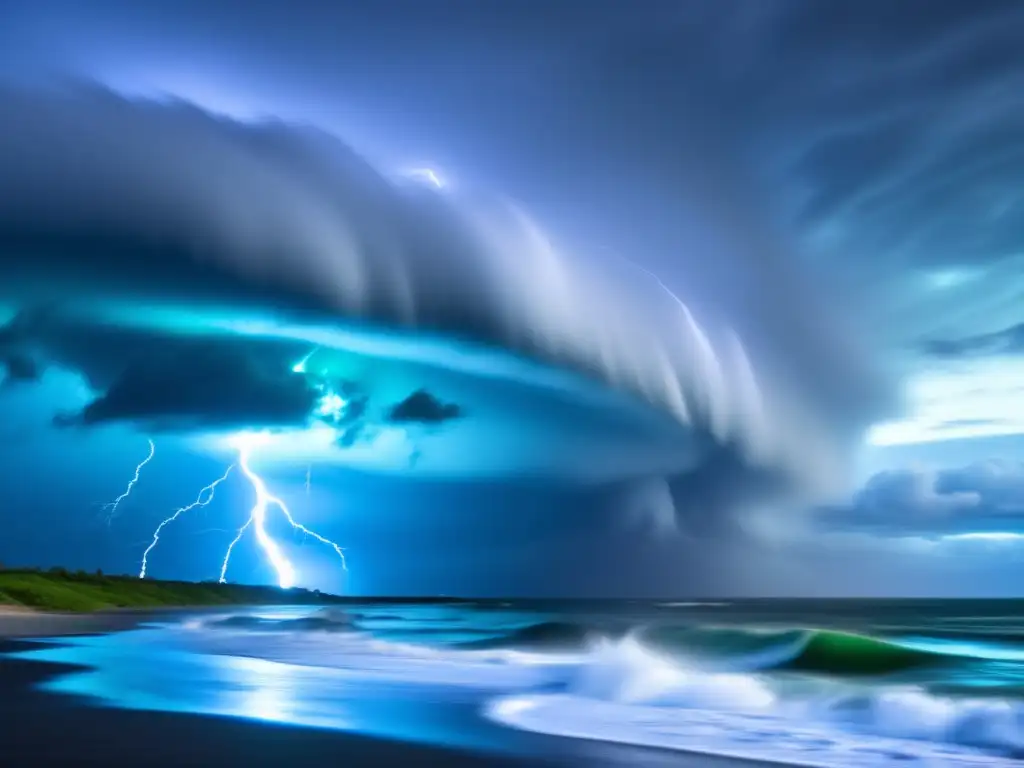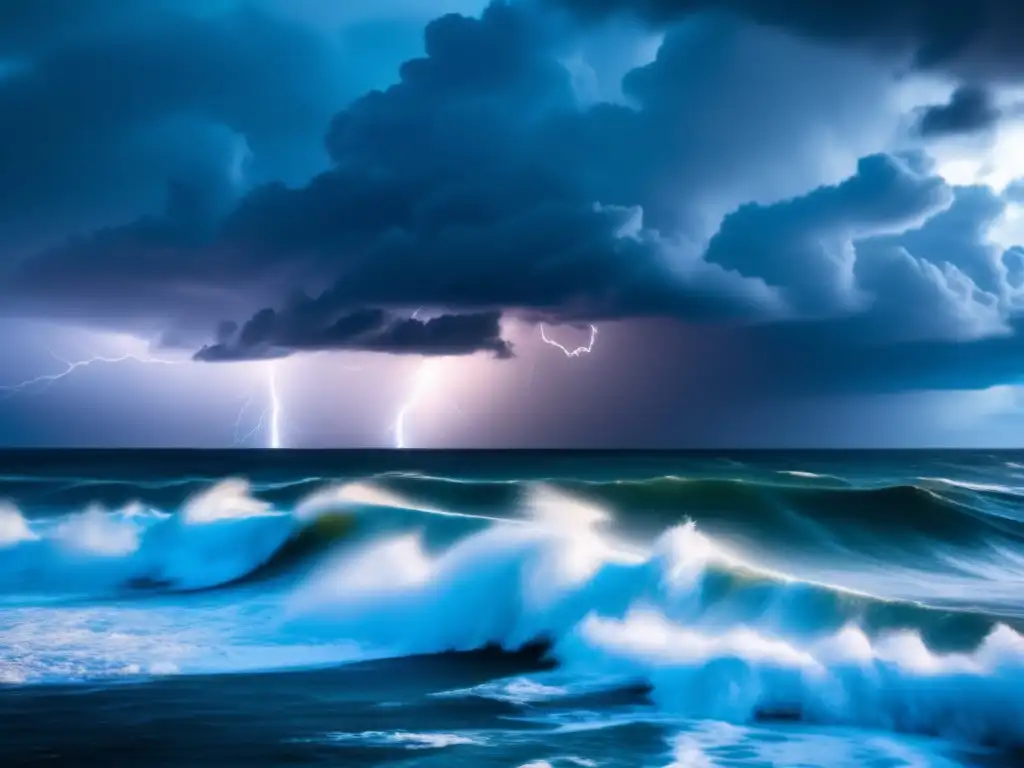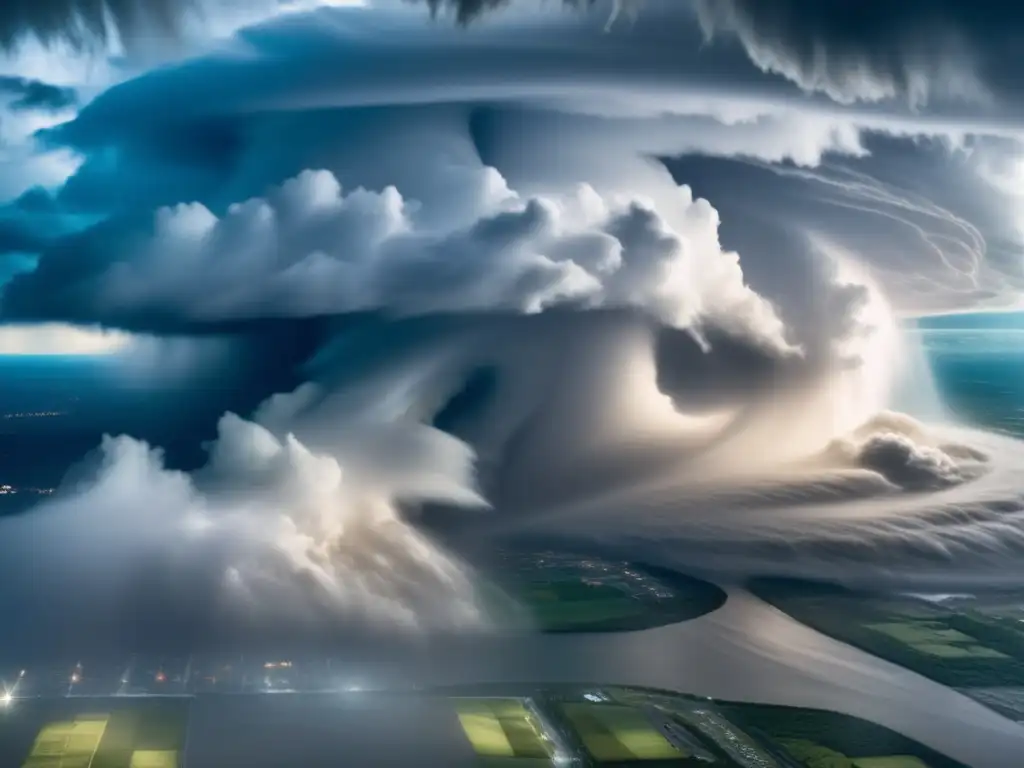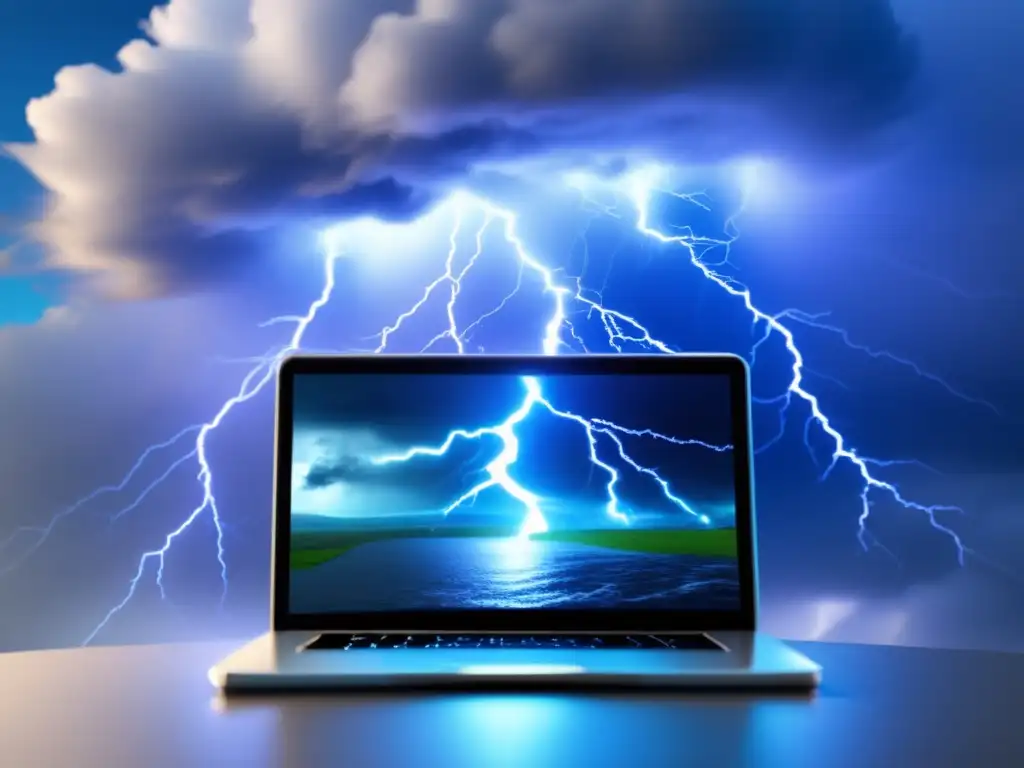The Science Of Hurricanes: What’s Happening During The Storm

The Science of Hurricanes: What’s Happening During the Storm
Introduction
Hurricanes are powerful, destructive, and unpredictable natural disasters that affect millions of people around the world every year. The science behind hurricanes is fascinating, and understanding it can be critical for preparation, survival, and recovery in the event of a storm. In this article, we will explore the science of hurricanes, including topics such as how they form, what happens during the storm, and what to do before, during, and after a hurricane.
How Do Hurricanes Form?

Hurricane Formation
A hurricane, also known as a tropical cyclone or typhoon, is a rotating weather system that forms over warm ocean waters near the equator. Hurricanes are classified based on their maximum sustained winds using the Saffir-Simpson Hurricane Wind Scale, which ranges from Category 1 (74-95 mph) to Category 5 (over 157 mph).
Tropical Disturbances
It all begins with tropical disturbances that are areas of disorganized showers and thunderstorms over the ocean. These disturbances can move and evolve over time, but not all of them become hurricanes. When the conditions are right, a tropical disturbance may develop an organized circulation, which is the beginning stage of a tropical depression.
Tropical Depressions and Tropical Storms
A tropical depression is a rotating weather system with winds up to 38 mph. As the system strengthens, it can develop into a tropical storm, which has winds of 39-73 mph. A tropical storm receives a name when its sustained winds reach 39 mph, according to the World Meteorological Organization.
Hurricane Development
When the tropical storm continues to grow in intensity and size, it can eventually become a hurricane. Hurricanes are defined as a rotating weather system with winds of 74 mph or higher. They can range in size from 50 to 1000 miles in diameter, and they can last for several days to weeks.
What Happens During a Hurricane?

The Eye of the Hurricane
The eye of the hurricane is the calm center of the storm, surrounded by the most intense winds and rain. The eye can vary in size and shape, but it is typically circular or oval-shaped. The wind direction reverses inside the eye, and the skies are often clear or partly cloudy.
The Eyewall
The eyewall is the ring of thunderstorms that surrounds the eye of the hurricane. It is the most intense part of the storm, with the strongest winds, torrential rainfall, and dangerous storm surge. The eyewall can extend up to 50 miles from the eye, and it is where the most significant damage occurs.
The Rainbands
Rainbands are bands of showers and thunderstorms that spiral around the hurricane. They can stretch hundreds of miles from the center of the storm and bring heavy rainfall, gusty winds, and isolated tornadoes. The rainbands can cause flooding, flash floods, and mudslides, even if the hurricane is hundreds of miles away.
The Storm Surge
The storm surge is the abnormal rise in sea level caused by the hurricane's winds and low pressure. It can reach heights of over 20 feet and can cause significant coastal flooding, erosion, and structural damage. The storm surge is one of the most dangerous and deadly aspects of a hurricane, and it can affect people and infrastructure hundreds of miles inland.
How to Prepare for a Hurricane?

Stay Informed
One of the best ways to prepare for a hurricane is to stay informed about the storm's progress and potential impacts. You can use reliable sources of information such as the National Hurricane Center, local emergency management agencies, or hurricane tracking apps to get up-to-date information on the hurricane's track, intensity, and potential impacts.
Create an Emergency Kit
You should also create an emergency kit that includes essential supplies such as food, water, medication, first aid kit, flashlight, batteries, cash, and important documents. You may also want to prepare for potential power outages by having a backup generator or alternative sources of heating and cooling.
Secure Your Home
You should also secure your home by installing hurricane shutters, reinforcing doors and windows, and trimming trees and shrubs. You should also make sure that your roof is in good condition, and your gutters and drains are clear of debris. If you live in a flood-prone area, you may want to consider purchasing flood insurance.
Evacuate if Necessary
If you live in a low-lying area or near the coast, you may need to evacuate if a hurricane is approaching. You should follow the instructions of local authorities and evacuate early to avoid traffic and potential disaster. You may also want to inform your family and friends about your plans and destination.
What to Do During a Hurricane?

Stay Indoors
If you are in the path of a hurricane, you should stay indoors and away from windows and doors. You should also stay in a small interior room, closet, or bathroom, preferably on the lowest level of your home. You should avoid using elevators, and you should turn off gas, electricity, and water if instructed to do so.
Monitor the Storm
You should also monitor the hurricane's progress and potential impacts by listening to the radio or TV, using a NOAA weather radio, or checking the latest updates online. You can use social media to connect with emergency services and share your location or status with your family and friends.
Be Prepared for Power Outages
If there is a power outage, you should avoid using candles and rely on flashlights or battery-powered lights instead. You should also avoid using portable generators indoors, as they can produce carbon monoxide, which is a deadly gas. You should only use generators outside and away from windows and doors.
What to Do After a Hurricane?

Assess the Damage
After the hurricane passes, you should assess the damage to your home and property. You should take photos or videos of the damage and make a list of the items that are damaged, lost, or destroyed. You should also contact your insurance company and inform them about the damage.
Stay Safe
You should also stay safe by avoiding downed power lines, flooded areas, and damaged buildings. You should wear protective clothing, such as gloves and boots, when cleaning up debris or removing fallen trees. You should also be aware of potential health hazards, such as mold, bacteria, and contaminated water.
Rebuild and Recover
Rebuilding and recovering after a hurricane can take weeks, months, or even years, depending on the severity of the damage. You may need to hire contractors, obtain permits, and apply for financial assistance to repair or rebuild your home. You should also seek emotional support from family, friends, or professional counselors to cope with the trauma and stress of the hurricane.
Frequently Asked Questions

-
What is a hurricane?
A hurricane is a tropical cyclone or typhoon that has sustained winds of 74 mph or higher. It is a rotating weather system that forms over warm ocean waters near the equator.
-
How do hurricanes form?
Hurricanes form from tropical disturbances that can evolve into tropical depressions, tropical storms, and eventually hurricanes. They require warm ocean waters, low wind shear, and high humidity to form and develop.
-
What is the eyewall of a hurricane?
The eyewall is the ring of thunderstorms that surrounds the eye of the hurricane. It is the most intense part of the storm, with the strongest winds, torrential rainfall, and dangerous storm surge.
-
How can I prepare for a hurricane?
You can prepare for a hurricane by staying informed, creating an emergency kit, securing your home, and evacuating if necessary. You should also have a plan in case of power outages and inform your family and friends about your plans and destination.
-
What should I do after a hurricane?
You should assess the damage to your home and property, stay safe by avoiding hazards, and seek emotional support if needed. You may need to hire contractors, obtain permits, and apply for financial assistance to rebuild and recover.
Conclusion
The science of hurricanes is complex, but understanding it can be critical for preparation, survival, and recovery in the event of a storm. In this article, we explored the basics of hurricane science, including how they form, what happens during the storm, and what to do before, during, and after a hurricane. By staying informed, creating an emergency kit, securing your home, and following the instructions of local authorities, you can help protect yourself and your loved ones from the potential dangers of a hurricane.
If you live in a hurricane-prone area, it is essential to take the necessary precautions and have a plan in place. Share this article with your family and friends, and encourage them to take the necessary steps to prepare for a hurricane. If you have any questions or comments, please leave them in the comments section below. Thank you for reading, and stay safe!
Additional Resources

 Keeping Your Electronics Safe And Usable During A Hurricane
Keeping Your Electronics Safe And Usable During A Hurricane The Role Of Nonprofits In Providing Aid During Hurricanes
The Role Of Nonprofits In Providing Aid During Hurricanes Propane Safety During A Hurricane
Propane Safety During A HurricaneIf you want to discover more articles similar to The Science Of Hurricanes: What’s Happening During The Storm, you can visit the During the hurricane: category.
Leave a Reply

Articulos relacionados: